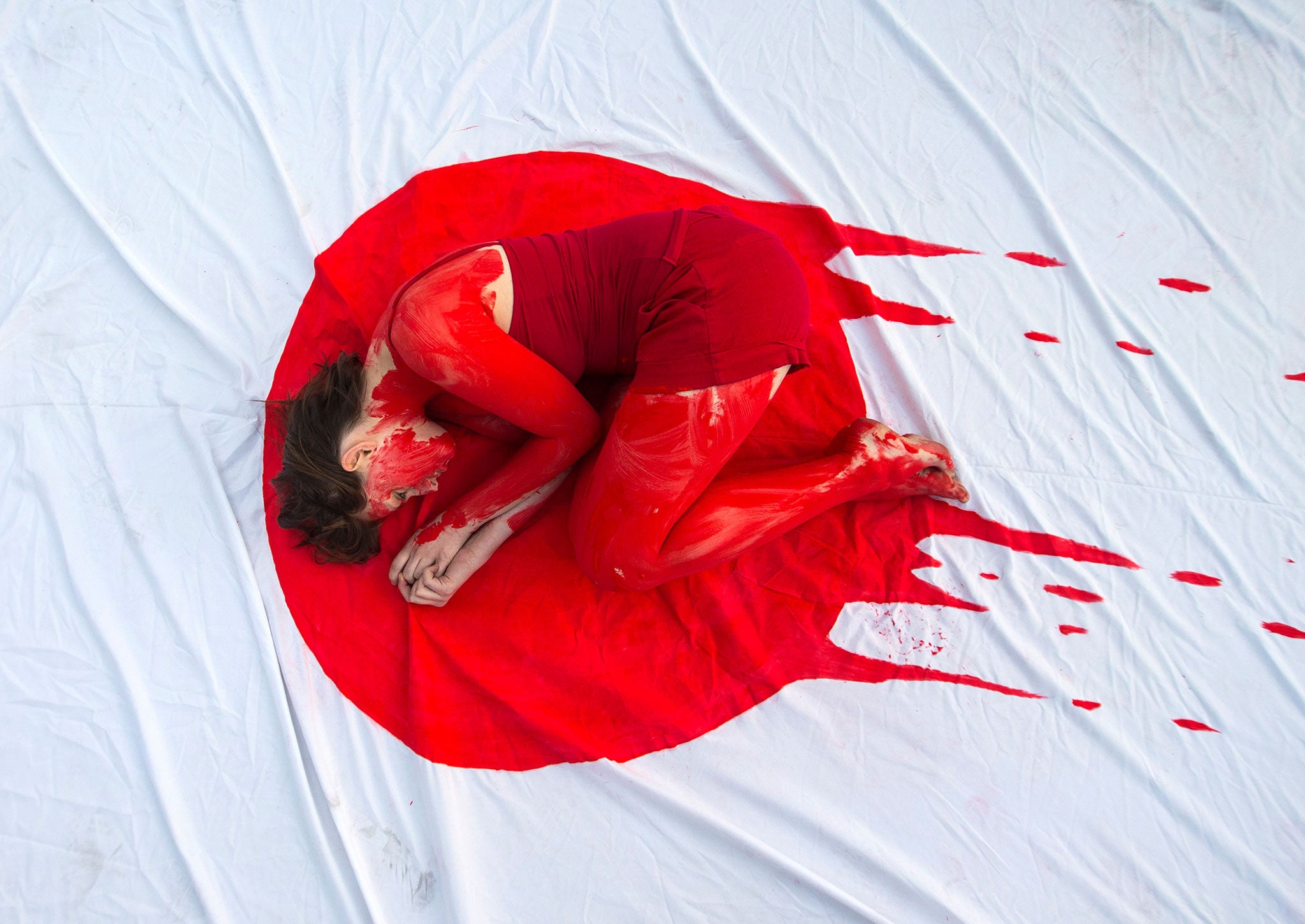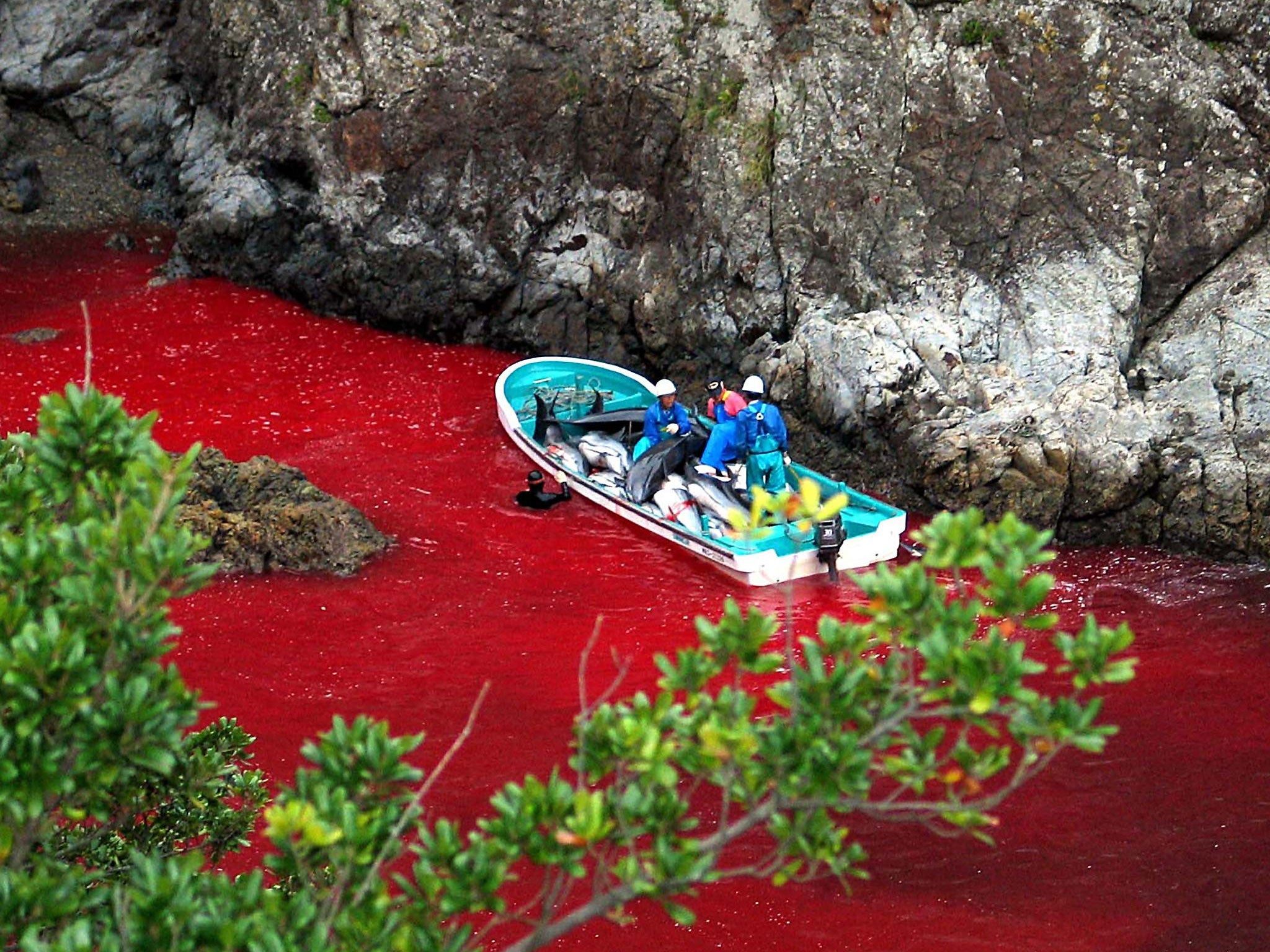Japan must put an end to the brutal slaughter and torture of its dolphins
Every year more than 2,000 of the intelligent creatures are needlessly murdered


Dolphins are dying to entertain us. That's the message coming out of the annual capture and mass slaughter of dolphins near the small Japanese village of Taiji, which began this month.
Every year between September and March, more than 2,000 dolphins are slaughtered in these so-called “drive hunts”. During a typical drive hunt, boats chase pods of dolphins while crew members clang metal poles together underwater, creating a cacophonous wall of sound that confuses and alarms the animals.
Using nets, the boats corral the disoriented animals into a “killing cove”. Calves who are unable to keep up and become separated from their mothers are left to die of starvation or be eaten by sharks.
A government ban on stabbing the dolphins to death with knives and spears has resulted in an officially sanctioned killing method requiring that a metal pin be driven into the cervical region (the “neck”) of the dolphin, severing each animal's brainstem.
In theory, this new rule should result in a quicker death, but in practice, hunters continue to wade through the bloody water wielding their spears among the fully conscious, thrashing, squealing dolphins, who are slowly and painfully executed alongside their families and friends.
In an attempt to prevent photos of the cove stained red with the blood of dying dolphins, hunters have started inserting wooden wedges into the animals' wounds to minimise the outpouring of blood. The authors of an article published last year in the respected Journal of Applied Animal Welfare Science tell us what I'm sure you're already thinking: that inserting a wooden wedge into a bloody wound prolongs the length of time it takes to die and prevents quick insensibility through blood loss.
Each year, local fishers keep a couple of dozen of the dolphins they catch alive to sell to aquaria, swim-with-dolphins programmes, and performing-dolphin shows at places such as SeaWorld. A single live dolphin can fetch tens of thousands of pounds, and it's these lucrative sales that keep the dolphin slaughter going.
The fate of these dolphins is perhaps even worse than that of their slaughtered brothers and sisters. In the open sea, dolphins swim some 40 miles a day in large groups made up of their family and friends. In captivity, they are confined to shallow tanks, where their renowned vocalisations, on which they rely for communication, become a garble of meaningless reverberations that bounce off the walls, driving some dolphins insane. The French explorer and conservationist Jacques Cousteau said that life for a captive dolphin “leads to a confusion of the entire sensory apparatus, which in turn causes in such a sensitive creature a derangement of mental balance and behaviour”.

Tanks are kept clean through the use of potentially harmful chemicals. Because of high chlorine levels in their tanks, dolphins at the Clearwater Marine Aquarium in Florida were unable to open their eyes and their skin began to peel off.
And newly captured dolphins are forced to learn tricks. Former trainers say that withholding food and isolating animals who refuse to perform are two common training methods.
According to Ric O'Barry, who was a dolphin trainer for the Flipper television series in the 1960s and is now head of The Dolphin Project, “positive reward” training is a euphemism for food deprivation. Former dolphin trainer Doug Cartlidge maintains that dolphins, who are highly social, are punished by being isolated from other animals: “You put them in a pen and ignore them. It's like psychological torture”. All this pain and torment is inflicted just so that visitors can be amused for a couple of hours.
“Surely it is the least of all rights to be spared the worst of all wrongs,” said Gandhi. If you don't want to support dolphin killings or the misery of highly intelligent animals in the name of entertainment, please stay away from marine-mammal displays like SeaWorld and swim-with-dolphins programmes, and share this information with friends and family.

Join our commenting forum
Join thought-provoking conversations, follow other Independent readers and see their replies